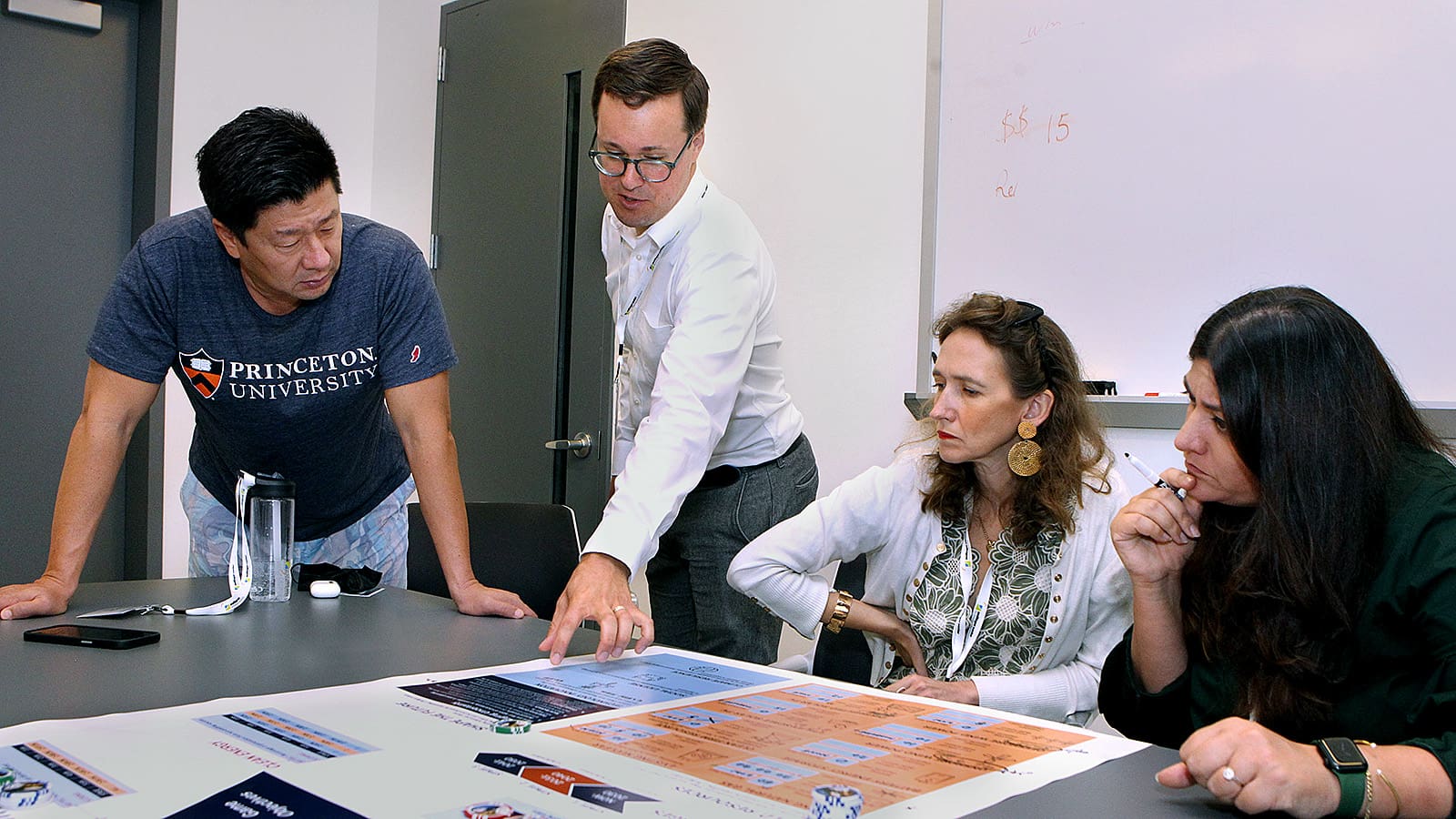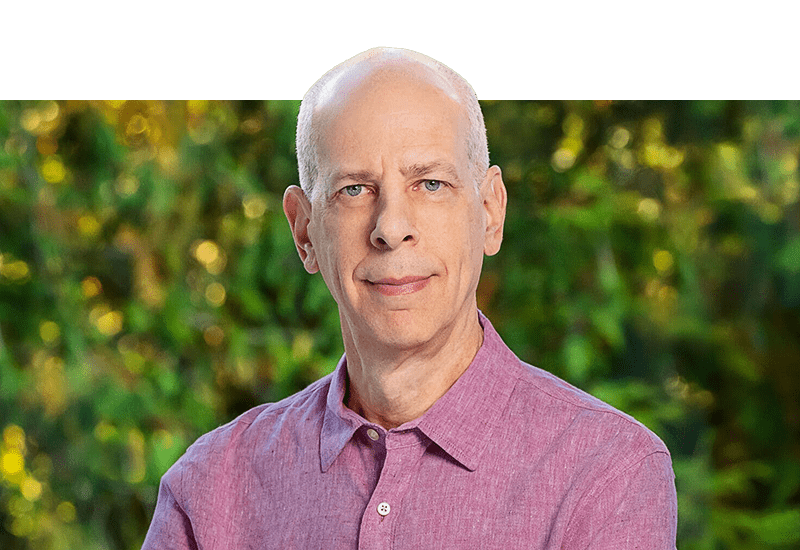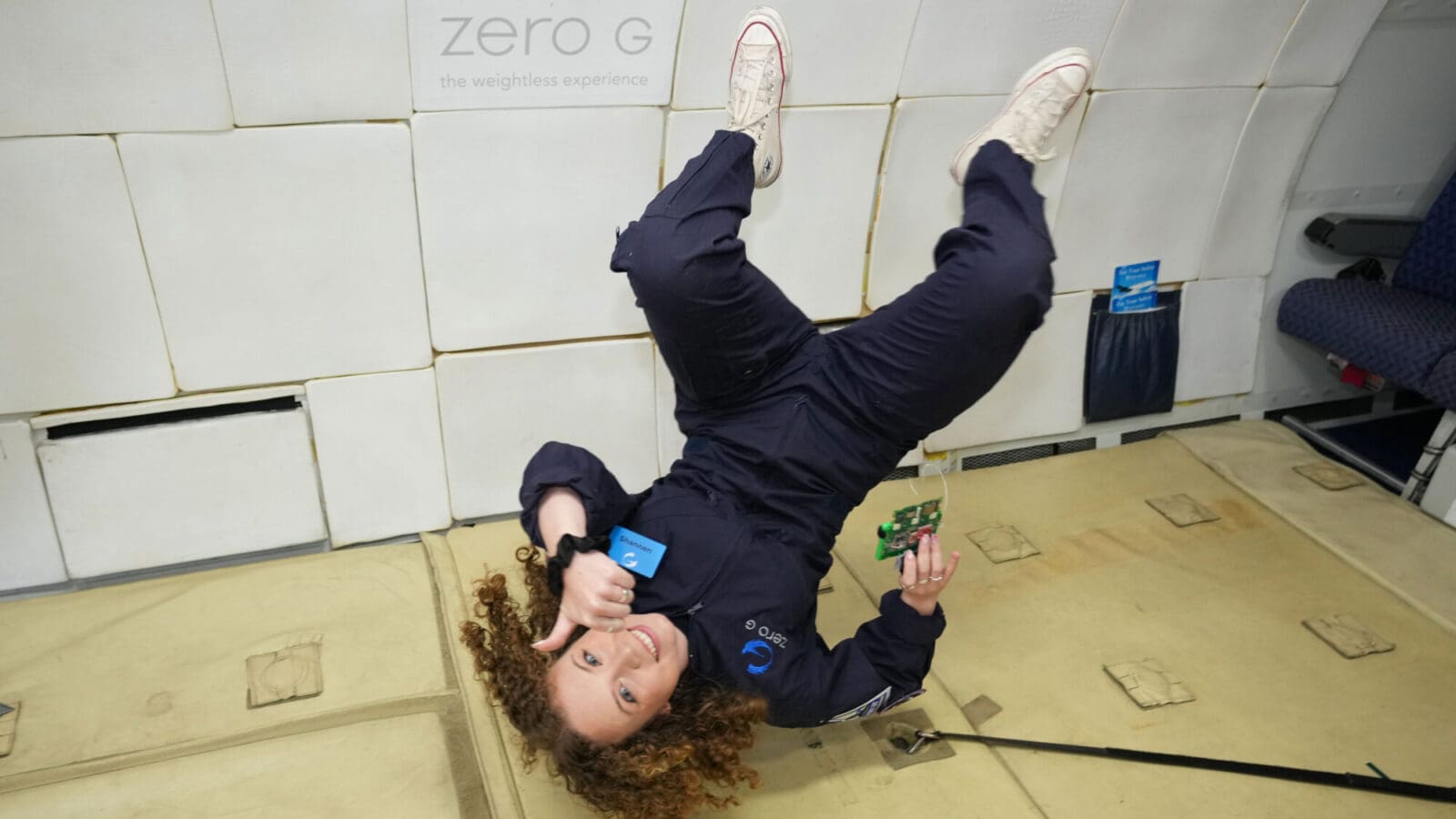Rocket propulsion study helps chart NASA’s future
By
Nick DiUlio
on
Throughout the last several decades, Princeton engineers have played various key
roles in the advancement of space travel and its related technologies for the National
Aeronautics and Space Administration (NASA), and for the last year Princeton engineer Yiguang Ju was
integral in just such a contribution.
Ju, a professor of mechanical and aerospace engineering, participated in NASA’s
recently completed Rocket Study, a yearlong collaborative analysis of the pros and cons of
solid- and liquid-fueled rockets – a critical review as the administration approaches a unique
crossroads. According to Ju, the recent retirement of NASA’s shuttle program—which used
a very efficient liquid-hydrogen-fueled rocket (the space shuttle main engine) and two solid rocket boosters—means
that the U.S. is becoming incapable of sending astronauts using large, liquid-fueled rockets into low-Earth
orbit (LEO) or to the International Space Station.
While solid rockets are more robust and require lower manufacturing and maintenance costs, they
also have low thrust efficiency, said Ju. Historically, NASA shuttles had the most sophisticated reusable,
two-stage combustion, liquid hydrogen and oxygen-fueled rocket engines, but they required intensive
maintenance after each flight. With the retirement of the shuttle program, the most advanced and only
available large-thrust, liquid-fueled space shuttle main engine made in the United States will be retired as
well.
“The question then becomes, ‘What should NASA do and how should it focus its
future efforts?’” said Ju. “Does NASA need to rebuild a large hydrocarbon
liquid rocket like the current Russian RD180 series, or a large solid rocket similar to the space shuttles’
solid rocket boosters?”
That question was the primary focus of the administration’s study, but the implications
of the answer go beyond the mere differences between two different technologies. For instance, Ju says NASA
needs to consider whether it will continue to focus on LEO missions or pay more attention to deep space
activities beyond the Earth and Moon, essentially leaving the LEO business to private companies.
The Rocket Study, which ran from August 2010 through August 2011, was motivated and conducted to
provide fundamental knowledge and extensive review of those implications and the way they will shape future
space missions. NASA is currently working on compiling the findings of the study, which should be published
within the coming year. Ju’s contribution to the discussion was essential to the process.
“Professor Ju is a world-renowned expert in this field, and his participation in the team
was extremely valuable,” said Ave Kludze, Jr., NASA headquarter’s
engineering program manager in charge of the study. In September, Kludze visited Princeton and presented Ju
with the NASA Administrator’s Certificate of Appreciation for his role in the
investigation.

“This was one of the best and most challenging projects I have ever managed,”
said Kludze. “I was very glad to have someone of his caliber on my team.”
Last June, Kludze began assembling that team, which eventually totaled 60 individuals representing
NASA, private industry, and academia, with various levels of expertise in solid rocket propulsion, liquid
rocket propulsion, rocket industry infrastructure and industrial base, cost analysis, safety and
reliability, environmental factors and international rocket propulsion trends.
The idea was to objectively “examine and re-examine the underlying biases and assumptions
that have led to basic—and sometimes incorrect—perceptions, understandings and concepts
of liquid and solid rocket propulsion systems,” said Kludze.
“This was a show-me study based on facts,” he added. “If you couldn’t
prove it, it wasn’t going in.”
On its surface, the discussion could seem simple. Hydrocarbon-fueled liquid rockets are non-toxic
and have the capability to more accurately control a rocket’s thrust and have a better specific
impulse (propulsion efficiency) — that is, how long one pound of propellant can deliver one pound of
thrust.
However, these rockets also require a complicated turbo-pumping system to feed the fuel into the
high-pressure rocket combustor. Comparatively, a solid rocket delivers a lot of thrust for its volume and
can reduce air drag for low sea-level propulsion. It is also, said Ju, much simpler to design and maintain.
Which technology better serves NASA’s future purposes is the stuff of complex debate.
“We wanted all kinds of different viewpoints, because we all come out of engineering
school with opinions and biases informed by our professors and peers, and sometimes we tend to believe
certain things without question,” said Kludze. “This study forced us to go back and look
more carefully at some of those biases from many perspectives.”
Ju’s perspective came not only from his celebrated body of work in the science of rocket
propellants and technologies, but also from his multinational background, which includes an undergraduate
education in his native China and a Ph.D. from Japan’s Tohoku University in 1994.
“I’ve never met anyone with that unique set of background qualities from China,
Japan, and the United States,” said Kludze. “He has a good understanding of
what goes on in other parts of the world, and he brought that experience to the team, broadened our
perspectives, and helped us to look at things from a different angle.”
Ju, who has been on the Princeton faculty since 2000, develops new technologies and investigates
basic principles in sustainable energy, propulsion, and functional nano-materials. He said that his
involvement in the NASA study caused him to harken back to something a graduate advisor at Tohoku University
of Japan once told him.
“He said, ‘Aerospace is not just about technology. It is about a dream to
educate the next generation,’” said Ju. “So when I got the call from Ave last
summer, I knew this was a big deal and that I very much wanted to be
involved.”





